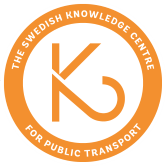Article highlighted
Public transport at a time of upheaval
“During the pandemic, we have learned that it is possible to influence people's behaviour and that both organisations and individuals have the ability to change and find new creative solutions, when necessary,” says John Hultén.
Before the Covid-19 pandemic, public transport in Sweden was characterised by a positive development, with both the number of passengers and public transport’s share of total transport pointing upwards. An increased focus on the negative consequences for the environment and congestion from car use contributed to a renaissance in public transport, not least in larger cities.
“Public transport has taken on an increasingly structuring role in the 21st century, which affects how we plan and build our cities,” says John Hultén.
The future of public transport
Research that has studied previous crises shows that if conditions return to what they were before the crisis, many people will resume the behaviour they had before the crisis. During the Covid-19 pandemic, however, we have learned to communicate remotely, which can affect how we work, travel and live in the future. During the pandemic, there has also been a rapid development in the public transport authorities' communication with travellers. New research shows that many travellers are prepared to choose a different time for their journey, if they receive information about anticipated congestion.
“Combined with economic instruments and increased remote working, better information about congestion can affect the challenge of having so many simultaneous travellers in the morning and late afternoon. This can save resources that can instead be invested in developing public transport and other sustainable mobility solutions,” says John Hultén.
At the moment, public transport is in a potential time of upheaval.
“The future of public transport depends on whether politicians and authorities are prepared to continue investing, even if travellers do not return quickly and the economy is strained. Another important question is whether public transport authorities are prepared to redefine their role and take broader responsibility for sustainable travel, which includes mobility services other than traditional public transport,” concludes John Hultén.
